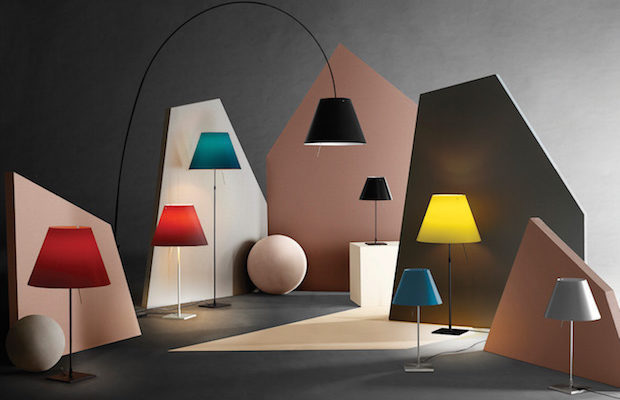 COURTESY LUCEPLAN
COURTESY LUCEPLAN
Feature
Italy Makes Light Right
Italy is to contemporary lighting design as Detroit is to cars. While no country can claim total dominance of the field, Italy has long been at the forefront of lighting innovation. After World War II the country transformed itself from a sleepy, mostly agrarian culture into a powerhouse of design manufacturing, thanks to a core group of men and women who almost single-handedly shaped the direction of contemporary consumer products. “The emergence of Italy during the last decade as the dominant force in consumer product design has influenced the work of every other European country and now is having its effect in the United States,” wrote curator Emilio Ambasz in his introduction to the catalogue to Italy: The New Domestic Landscape, a groundbreaking show at New York’s Museum of Modern Art in 1972. This was especially true for lighting, with companies like FLOS and Artemide leading the way. With the establishment of Euroluce, a major lighting trade fair in 1976, Italy became the global lighting marketplace.
Since then the major players have kept pushing the envelope, from incandescent to halogen to LED, whose potential seems boundless; and OLED fixtures loom on the horizon. The secret to Italy’s prominence is the passion of its individual manufacturers as champions of technological exploration and innovation. “Design has little meaning if there is no substance,” Ernesto Gismondi, founder and CEO of Artemide, has said. “It is only in-house technology which sets you apart from the rest.”
Luceplan
IN 1978 RICCARDO SARFATTI and his wife, Sandra Severi Sarfatti, along with architect Paolo Rizzatto, who had also designed lighting for Arteluce, launched Luceplan. Riccardo Sarfatti—son of pioneering lighting giant and founder of Arteluce Gino Sarfatti, had worked in his father’s company from 1964 to 1978, five years after it was sold to FLOS. Alberto Meda, another major Milanese design star, joined the group in 1984, adding to its technical prowess.

Riccardo Sarfatti sold Luceplan to Royal Philips Electronics, the Dutch-based multinational corporation, in 2010. At the time, he was quoted as saying, “Bringing together design and new light sources—LED above all—is a thrilling prospect.” Sarfatti was killed in a car accident later that year. Since its purchase by Philips, Luceplan has become even more technology driven, but according to Giuseppi Butti, the United States CEO and a sixteen-year veteran of the firm, nothing has changed. “We are completely independent.”

The company makes great use of Philips scientific prowess. Its best-selling lamps, Silencio and Petale, include sound-controlling properties, a radical advance. While Rizzatto and Meda continue to design for the firm—Rizzatto’s iconic Costanza is now thirty years old—the company works with up-and-coming designers, including Argentinian Francisco Gomez Paz, a Rizzatto protégé, and Norwegian Daniel Rybakken. Today, Luceplan focuses more on commercial than residential products, but the demarcation is not clear-cut. Says Butti, “We do decorative products for the spec (commercial) market.”










